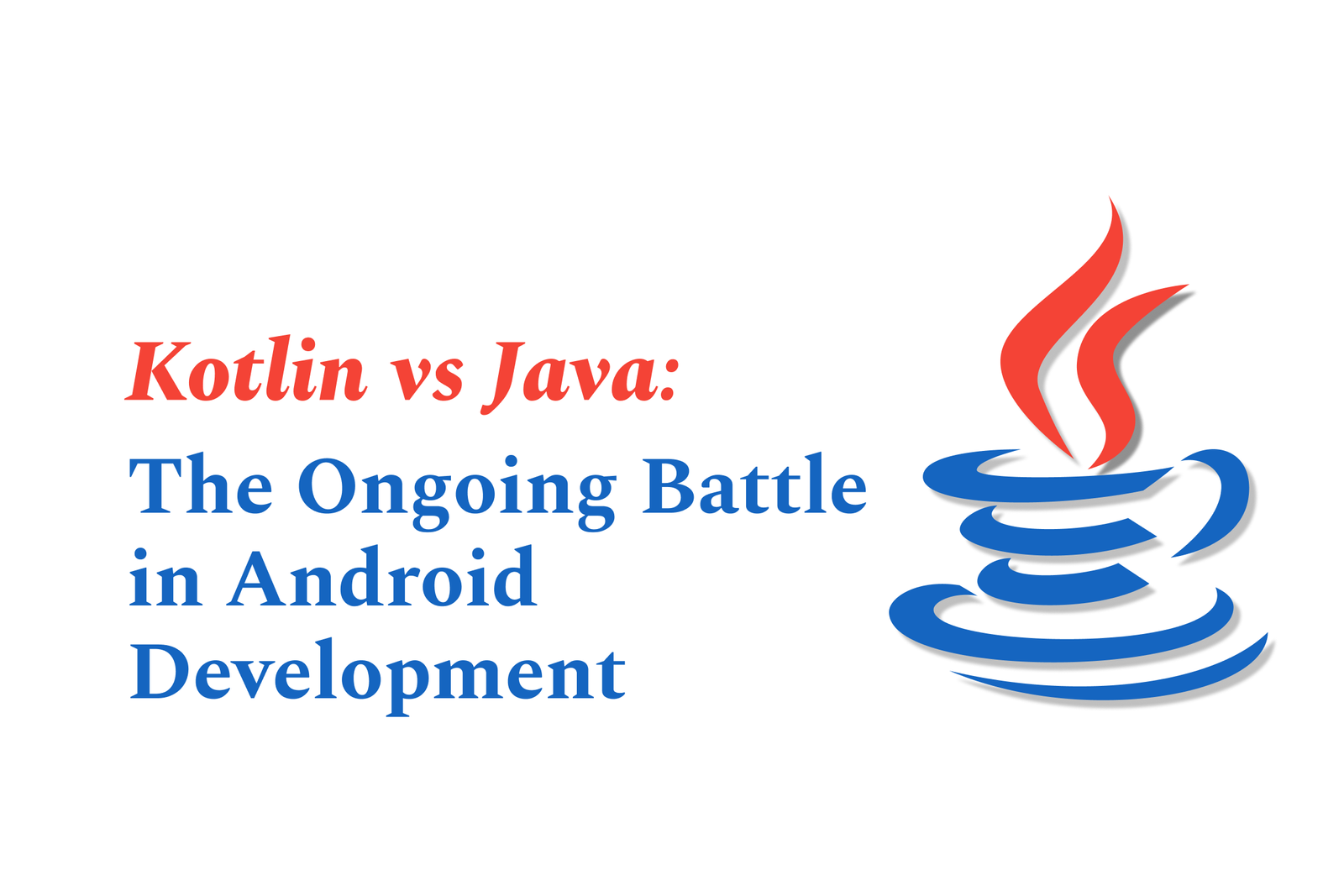Kotlin vs Java: The ongoing battle in Android development
Kotlin and Java are key players in Android development, with Kotlin offering modern features like null safety and coroutines, while Java boasts maturity and a vast ecosystem. The ongoing debate centers on choosing between Kotlin’s conciseness and Java’s proven stability.
Kotlin vs Java: The Ongoing Battle in Android Development
1 ) Introduction to the Debate
Java has long been the trusted language for Android development, known for its reliability and vast ecosystem. Kotlin, introduced more recently and officially supported by Google, offers modern features and syntactic improvements. Rather than a pure rivalry, the discussion highlights how both languages complement each other and serve different developer needs.
2 ) Key Differences Between Kotlin and Java
The article outlines 17 crucial differences, emphasizing that Kotlin supports a more functional programming style and provides null safety, which is difficult to replicate in Java without breaking backward compatibility. Other distinctions include:
Enhanced syntax and reduced verbosity in Kotlin
Absence of checked exceptions in Kotlin
Advanced coroutine support for asynchronous programming
Data classes and type inference to simplify coding
Extension functions and smart casts for cleaner code
3 ) Community Perspectives and Usage
Developers have varied opinions. Some see Kotlin as a sophisticated and expressive language that can reduce boilerplate and improve productivity, especially with features like coroutines for Android GUI programming. However, others argue Java’s vast ecosystem and stable tooling remain unmatched, stressing the importance of simplicity and consistency, especially when managing large scale production systems.
4 ) Ecosystem and Adoption
Kotlin’s rise is heavily tied to Google’s endorsement for Android apps, though JetBrains, Kotlin’s creator, remains central to its development. While Kotlin's ecosystem is growing, some believe it is still not at Java's mature level. Java advocates suggest knowing Java first can be beneficial before diving into Kotlin.
5 ) Learning and Practical Considerations
For developers transitioning or learning object oriented programming, Kotlin may present an easier entry due to its concise syntax and modern features. However, Java's verbosity can sometimes aid clarity, especially under pressure in real world debugging scenarios.
6 ) Summary and Outlook
The debate is less about choosing a winner and more about understanding each language's strengths and use cases. Experienced developers are encouraged to leverage both, learning from Java’s robustness and Kotlin’s modern capabilities. Despite new languages emerging, Java continues to maintain a strong foothold due to adoption hurdles, ecosystem, and stability.
Conclusion:
The ongoing battle between Kotlin and Java in Android development is a dynamic conversation reflecting evolving programming paradigms, tooling preferences, and platform support. Both languages offer unique benefits, and their coexistence empowers developers to choose the best tool for their project requirements.
https://justacademy.in/news-detail/apple?s-push-notification-updates-for-ios-19
https://justacademy.in/news-detail/flutter-integration-with-github-actions
https://justacademy.in/news-detail/flutter-github-stars:-most-watched-repos
https://justacademy.in/news-detail/android-wearable-device-updates
https://justacademy.in/news-detail/swiftui-for-mac-catalyst:-building-cross-device-apps
Related Posts
Java supports GDPR and data privacy by enabling secure data handling through encryption, controlled access, and precise data management. It allows developers to minimize PII exposure, ensure data confidentiality, and design workflows that comply with data protection regulations effectively.
Java code quality tools have evolved to include advanced static analysis, integrated security checks, and AI-powered code reviews. These updates help developers detect bugs, enforce coding standards, and enhance security, streamlining the development process and improving overall code reliability.
Java remains a cornerstone in big tech companies, evolving with modern features like records, pattern matching, and virtual threads. Its robust ecosystem, enhanced performance, and growing AI integrations keep it vital for both legacy systems and innovative new projects.
Java and CI/CD pipeline optimizations streamline Java application development by automating builds, tests, and deployments. They improve efficiency through parallelization, caching, and secure secrets management, enabling faster feedback loops and more reliable, scalable software delivery.
Java supports modern cryptography standards through its flexible Java Cryptography Architecture (JCA), enabling integration of advanced algorithms like AES, EdDSA, and post-quantum tools. Libraries like Bouncy Castle offer FIPS-certified, hardware-accelerated implementations for secure development.
Java 23 enhances record patterns by enabling concise, direct destructuring of record components within pattern matching, simplifying type checks and data extraction. This improvement boosts code readability and expressiveness by reducing boilerplate in handling immutable data classes.
Java remains a top choice for mobile app backends, powering scalable, secure, and high-performance server-side solutions. Latest trends include cloud-native microservices, reactive programming, and enhanced JVM optimizations, enabling efficient, flexible, and robust mobile backend development.
Java SE 24 and LTS Java SE 21 offer enhanced features and performance, while Apache Spark 4.0.0 introduces Scala 2.13 support and advanced ML and SQL capabilities. Together, they empower developers to build scalable, high-performance data applications with modern tools.
JUnit 5 modernizes Java testing with a modular architecture, improved assertions, and seamless Java 8+ support. Beyond JUnit, tools like Mockito and AssertJ enhance mocking and assertions, creating a powerful, flexible ecosystem for writing clean, efficient Java unit tests.
Java plays a pivotal role in cloud automation tools by providing a robust, platform-independent language used to build scalable automation frameworks like Jenkins and Selenium, enabling efficient CI/CD pipelines, testing, and orchestration across diverse cloud environments.










